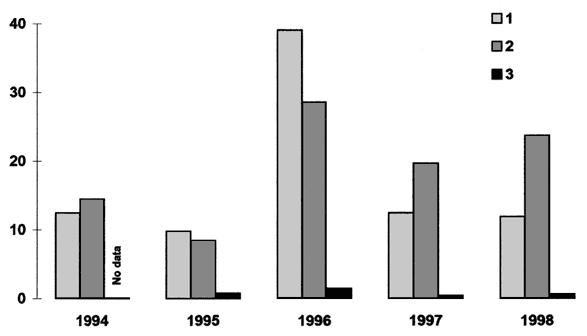Volume 7, Number 3—June 2001
Dispatch
Risk for Human Tick-Borne Encephalitis, Borrelioses, and Double Infection in the Pre-Ural Region of Russia
Figure

Figure. . Rates of disease in Perm, Russia (per 100,000 residents), of 1) tick-borne encephalitis (TBE), 2) Ixodid tick-borne borreliosis (ITBB), and 3) double infection.
Page created: April 26, 2012
Page updated: April 26, 2012
Page reviewed: April 26, 2012
The conclusions, findings, and opinions expressed by authors contributing to this journal do not necessarily reflect the official position of the U.S. Department of Health and Human Services, the Public Health Service, the Centers for Disease Control and Prevention, or the authors' affiliated institutions. Use of trade names is for identification only and does not imply endorsement by any of the groups named above.